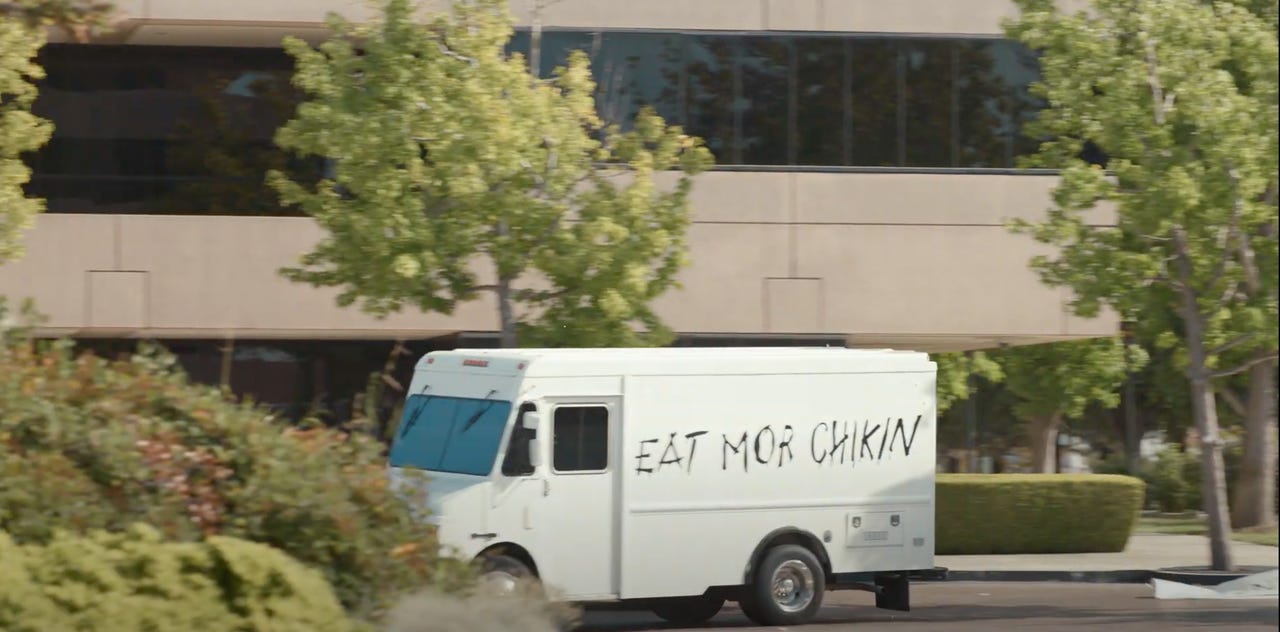
































If you do, there may be a problem.
Screenshot by ZDNetWhen you want life to be easier, you turn to technology.
If you missed out on this year's mega sale events, no problem. is rounding up the best tech deals still available, right here.
Read nowBe it reading material, entertainment, love or merely food, an app will make the longing go away.
As the pandemic has continued to change human behavior, the fast-food business has barely believed its good fortune.
For a long time, many restaurants were closed. The likes of McDonald's, Burger King, and Chick-fil-A had ready-made drive-thrus.
They could satiate those ready to salivate.
For some, though, this brought an unexpected customer problem.
In a recent interview with theAtlanta Business Journal, Chick-fil-A CEO Dan Cathy admitted: "We estimate about 30% of the people are driving off, driving away, because the lines are so long."
Now of course, being a hearty proponent of six-days-a-week capitalism, Cathy was underlining just how popular his fried chicken concern is.
Also:Best vegan chicken nuggets: A tasting menu of plant-based meat alternatives
Even Transport Secretary Pete Buttigieg confesses it's hard to react vehemently to Chick-fil-A's staunch anti-gay politics when its chicken is, to him at least, so good.
Surely, though, technology can solve this drive-thru snafu.
My constant examination of fast-food tech enhancements has revealed how many chains are testing AI ordering at the drive-thru. (McDonald's is now working with IBM to spread it nationwide.)
Then there's the sheer joy of, perhaps soon, having a RFID bridge toll-type sticker in your windshield that regularly carries all your order details without you ever saying a word.
Why, one company is even trying to use something called universal sensors to prompt beleaguered fast-food cooks to never, ever get your order wrong.
But Chick-fil-A has some particular challenges. It's often been set in very successful ways. It's very often been voted the slowest drive-thru -- could it be that its employees try and be nice to customers?
In fact, rather than instantly inject technological enhancements, Chick-fil-A has sometimes resorted to just building another Chick-fil-A down the road.
Sadly, Cathy confessed: "We found that doesn't solve the problem."
Shall we pause to consider what technology could, even in some dreamworld, do for a business that disappoints 30% of its customers at any given time? Can you imagine any business turning away so many of its customers because it just can't cater to them?
It's the sort of problem that would make Mark Zuckerberg never eat wild boar again.
Yet I hear you mutter the only solution must be -- simply has to be -- apps and delivery.
Cathy concedes that delivery is already enormous and will be more so. He spoke of a Chick-fil-A in Philadelphia whose$16 million business is 50% DoorDash.
But, in an America where there's a shortage of labor -- or perhaps a shortage of companies that pay a decent wage -- where are you going to find the drivers?
Chick-fil-A rival Popeyes has closed 40% of its dining rooms because it can't hire/won't pay enough for new staff.
Cathy says one solution is to create ghost kitchens of cooks churning out food in anonymous warehouses for delivery only. Indeed, Chick-fil-A is experimenting with ghost kitchens that offer far, far more than its traditional menu.
Oh, and is this a good time to mention that Chick-fil-A is currently being sued for allegedly hiking prices on its delivery items?
Some businesses, some pleasures will always (one hopes) involve analog consumption and a strong level of analog interaction, no matter what technology claims it can solve.
Yes, one day you may grab your app, a robot (human?) will make your food and another robot (dog?) will faithfully bring it to you.
One day.
For now, though, technology can only enhance the speed of fast food so much.
That darned analog, physical world keeps getting in the way.
 Tags chauds:
affaires
Logiciel d’entreprise
Tags chauds:
affaires
Logiciel d’entreprise